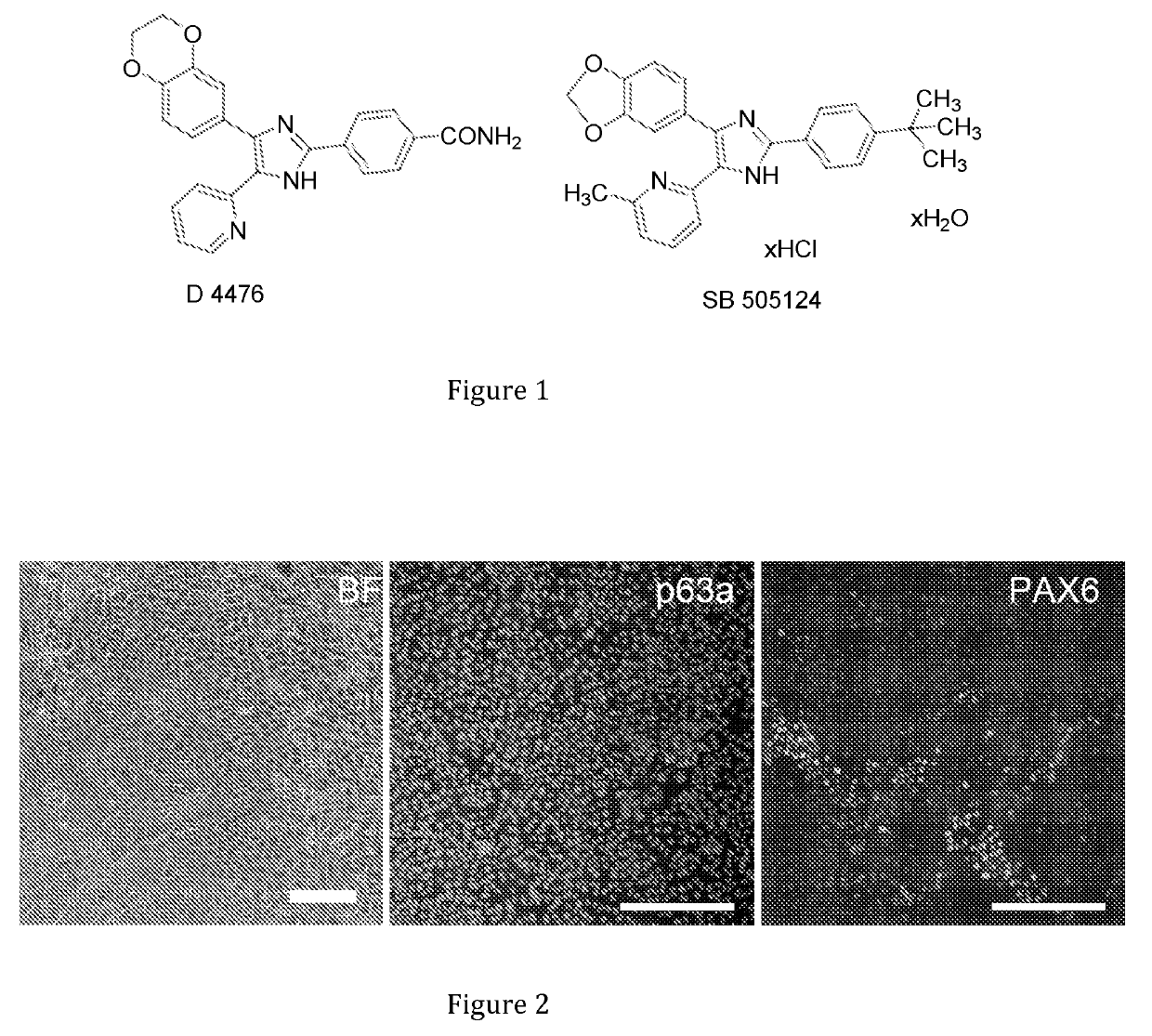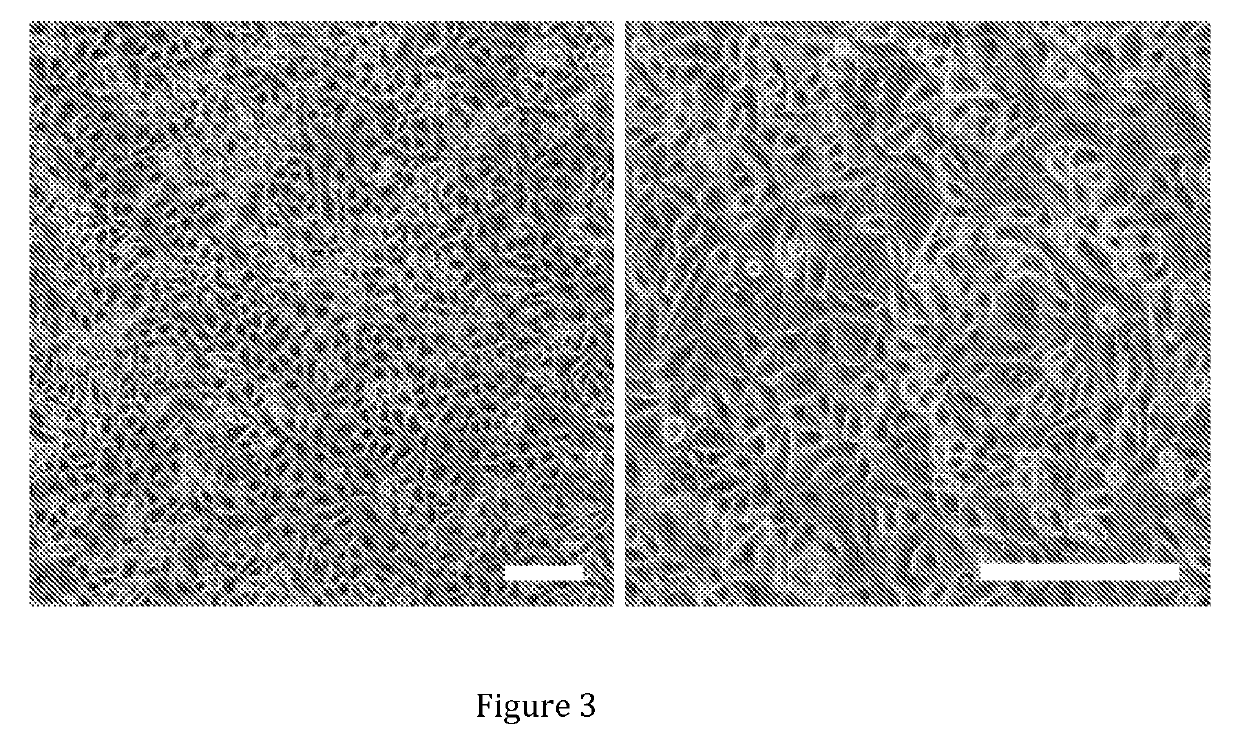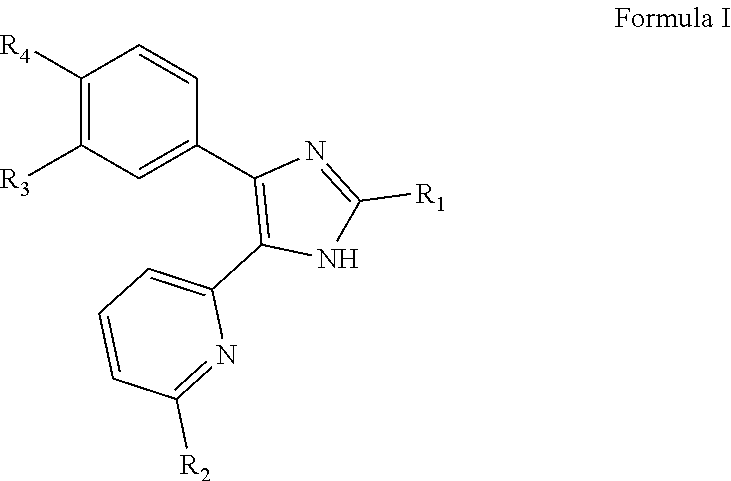Differentiation of pluripotent stem cells into corneal cells
a technology of stem cells and cornea, which is applied in the field of differentiation of pluripotent stem cells into corneal cells, can solve the problems of loss of pluripotency and differentiation into epithelial like cells, difficult use of a medium which requires donated limbal cells, and many methods that are slow or provide only modest differentiation efficiency
- Summary
- Abstract
- Description
- Claims
- Application Information
AI Technical Summary
Benefits of technology
Problems solved by technology
Method used
Image
Examples
example 2
[0105]The human pluripotent stem cells cultured in the feeder free culture system as described above were differentiated to corneal epithelial cells by detaching the pluripotent cells with TrypLE™ Select Enzyme for 4 min at +37° C. On Day 0, embryoid bodies were created with overnight incubation with 5 μM Blebbistatin (Sigma, B05601) or 10 μM Y-27632 dihydrochloride (R&D Systems, 1254) in a xeno-free culture medium containing: Knockout-Dulbecco's Modified Eagle's Medium (ko-DMEM) supplemented with 15% Xeno-Free Knockout Serum Replacement (XF-ko-SR), 2 mM GlutaMax (all from ThermoFisher Scienfic), 1% MEM Eagle Non-Essential Amino acid solution (NEAA, Cambrex Bio Science), 50 U / ml penicillin / streptomycin (Cambrex Bio Science), 0.1 mM ß-mercaptoethanol (ThermoFisher Scienfic).
[0106]The following day (Day 1) the medium was changed to induction medium: xeno-free culture medium supplemented with 10 μM SB-505124 and 50 ng / ml bFGF, and cells were incubated in this medium overnight. The purp...
PUM
| Property | Measurement | Unit |
|---|---|---|
| molar mass | aaaaa | aaaaa |
| molar mass | aaaaa | aaaaa |
| concentration | aaaaa | aaaaa |
Abstract
Description
Claims
Application Information
 Login to View More
Login to View More - R&D
- Intellectual Property
- Life Sciences
- Materials
- Tech Scout
- Unparalleled Data Quality
- Higher Quality Content
- 60% Fewer Hallucinations
Browse by: Latest US Patents, China's latest patents, Technical Efficacy Thesaurus, Application Domain, Technology Topic, Popular Technical Reports.
© 2025 PatSnap. All rights reserved.Legal|Privacy policy|Modern Slavery Act Transparency Statement|Sitemap|About US| Contact US: help@patsnap.com



